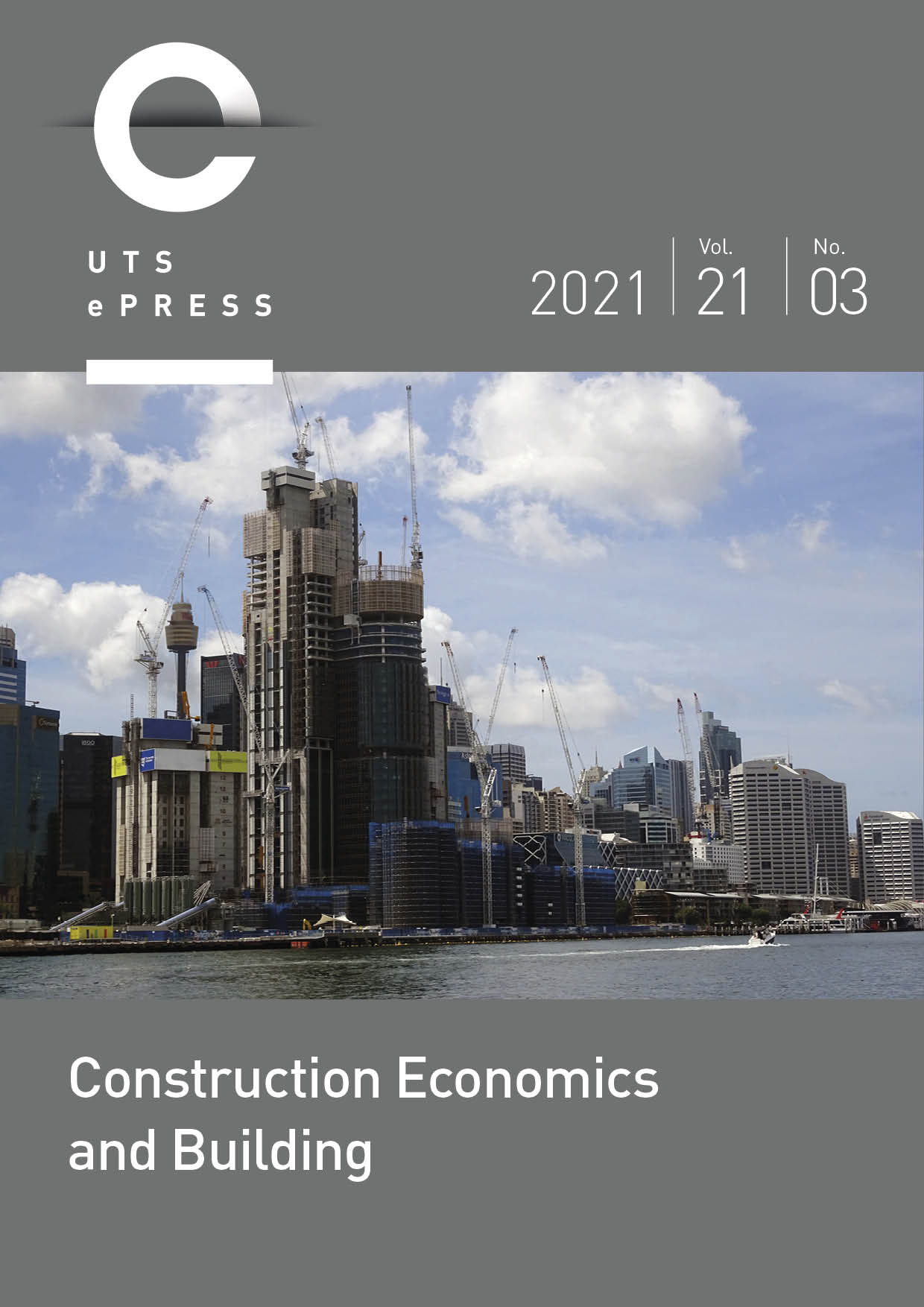Eco-innovation Adoption in Malaysian Contractor Firms: Understanding the Components and Drivers
Main Article Content
Abstract
Eco-innovation (EI) is a concept that integrates eco-consciousness within innovation development. While EI has been widely applied in the manufacturing industry, its adoption in the construction sector remains uncertain. The rising concern of environmental impacts on construction necessitates the importance of finding more innovative ways to push environmental needs within the complexity of projects’ design and methods. Contractors hold a strategic position to promote and adopt EI into management, construction, and development. This paper explores 1) the adoption level of EI practices and 2) the relationship between the adoption of EI practices and the factors that drive EI, within the Malaysian contractor firms. A questionnaire survey was developed using 18 EI components and four driving factors. A total of 95 Grade G7 contractor firms responded to the survey. The survey revealed that the level of EI adoption in contractor firms is still at a moderate pace. The results showed that organisational EI is a crucial component that supports the firm’s eco-innovative management approach to improve firm’s environmental performance. The results indicated that all four driving factors have a positive relationship with the implementation of EI. Technology factor was identified as crucial in influencing better adoption of EI in contractor firms. Findings from this study are beneficial to develop a framework on strategies to increase the EI adoption rate among the contractor firms and deepen the understanding of EI implementation at the firm level, further extending to the project site level.
Article Details
Section
Authors who publish with this journal agree to the following terms:
a) Authors retain copyright and grant the journal right of first publication with the work simultaneously licensed under a Creative Commons Attribution License that allows others to share and adapt the work with an acknowledgement of the work's authorship and initial publication in this journal.
b) Authors are able to enter into separate, additional contractual arrangements for the non-exclusive distribution of the journal's published version of the work (e.g., post it to an institutional repository or publish it in a book), with an acknowledgement of its initial publication in this journal.
c) Authors are permitted and encouraged to post their work online (e.g., in institutional repositories or on their website) prior to and during the submission process, as it can lead to productive exchanges, as well as earlier and greater citation of published work (See The Open Access Citation Advantage Service). Where authors include such a work in an institutional repository or on their website (ie. a copy of a work which has been published in a UTS ePRESS journal, or a pre-print or post-print version of that work), we request that they include a statement that acknowledges the UTS ePRESS publication including the name of the journal, the volume number and a web-link to the journal item.
d) Authors should be aware that the Creative Commons Attribution (CC-BY) License permits readers to share (copy and redistribute the work in any medium or format) and adapt (remix, transform, and build upon the work) for any purpose, even commercially, provided they also give appropriate credit to the work, provide a link to the license, and indicate if changes were made. They may do these things in any reasonable manner, but not in any way that suggests you or your publisher endorses their use.
